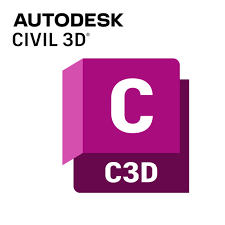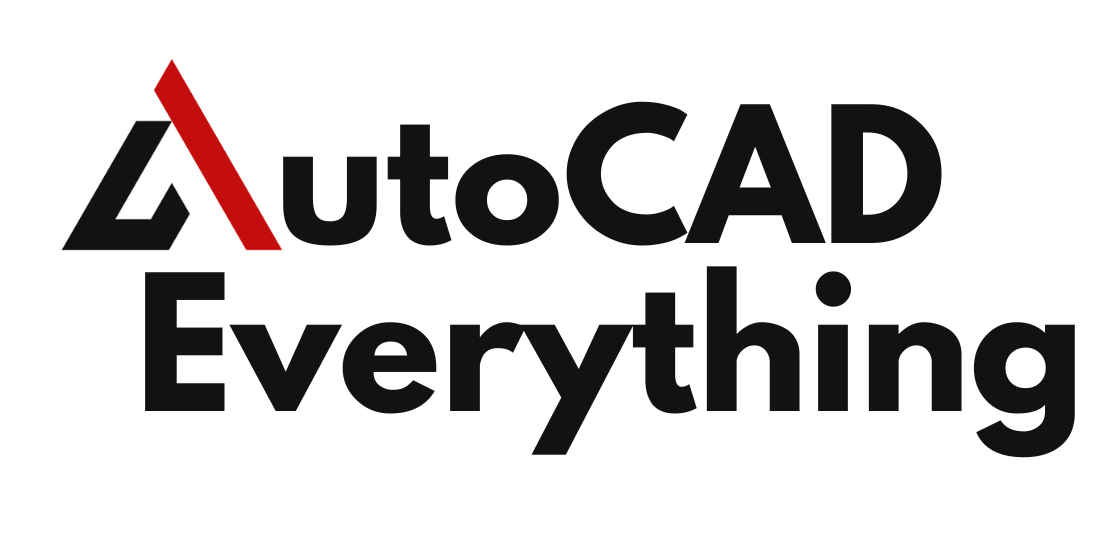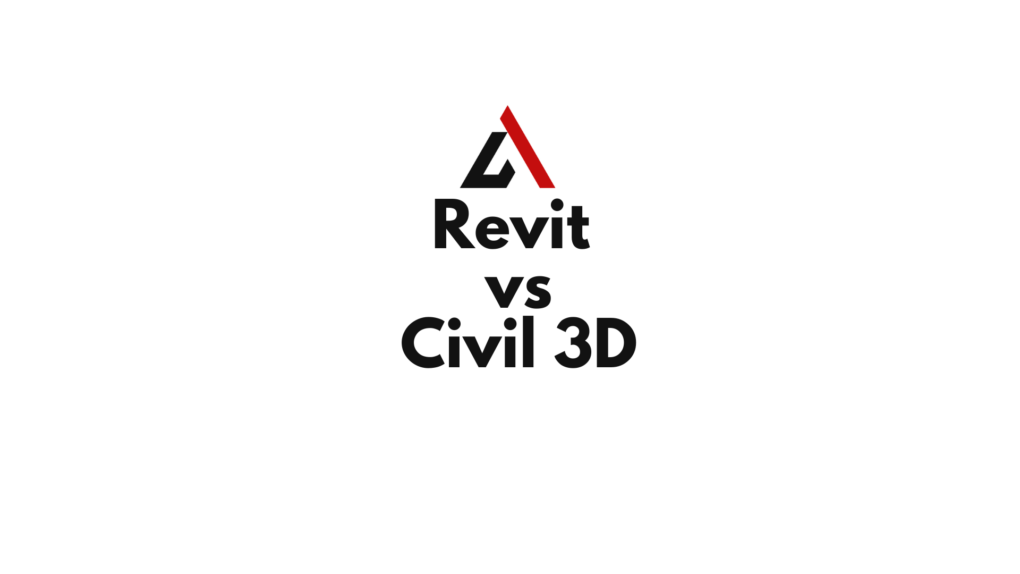Introduction
Revit and Civil 3D are both powerful Autodesk software solutions, but they serve distinct purposes in infrastructure design and site development.
- Revit is primarily a Building Information Modeling (BIM) software used for designing buildings, structures, and MEP (mechanical, electrical, plumbing) systems.
- Civil 3D is a civil engineering and site development tool that focuses on terrain modeling, road design, grading, and stormwater management.
If you’re deciding between Revit vs Civil 3D, this guide will break down their features, differences, and ideal use cases to help you select the right software for your project.
Table of Contents
What is Revit?
Revit is Autodesk’s BIM software designed for architecture, structural engineering, and MEP (mechanical, electrical, plumbing) systems. It enables users to create data-rich, parametric models that integrate construction documentation, visualization, and collaboration.

Key Features of Revit:
✅ Parametric BIM Modeling – All elements (walls, doors, floors, etc.) are data-rich and interconnected.
✅ Multi-Discipline Collaboration – Architects, engineers, and contractors can work within a single model.
✅ Structural & MEP Support – Allows integration of structural framing, HVAC, plumbing, and electrical systems.
✅ Automated Construction Documentation – Generates floor plans, sections, and schedules dynamically from the 3D model.
✅ Visualization & Rendering – Supports photorealistic renderings and walkthroughs for presentations.
✅ BIM 360 Collaboration – Cloud-based worksharing for team collaboration.
Who Uses Revit?
✔ Architects – For building design and BIM workflows.
✔ Structural Engineers – For reinforcement, steel framing, and load calculations.
✔ MEP Engineers – For HVAC, plumbing, and electrical layouts.
✔ Contractors – For construction sequencing and clash detection.
What is Civil 3D?
Civil 3D is Autodesk’s civil engineering design and documentation software used for site development, transportation, and water infrastructure projects. It is built on AutoCAD and adds parametric tools for terrain modeling, grading, road design, and drainage systems.

Key Features of Civil 3D:
✅ Site Development & Grading – Design and manage terrain surfaces, grading plans, and earthworks.
✅ Road & Transportation Design – Create alignments, profiles, and corridors for road infrastructure.
✅ Stormwater & Drainage Analysis – Design stormwater networks, detention basins, and sewer systems.
✅ Pipe Networks & Utility Modeling – Model sanitary sewer, water supply, and gas networks.
✅ Survey & Terrain Modeling – Import GIS and LiDAR data for accurate topography and site analysis.
✅ AutoCAD-Based Workflow – Works within the AutoCAD interface, making it familiar to CAD users.
Who Uses Civil 3D?
✔ Civil Engineers – For site design, grading, and roadway projects.
✔ Transportation Planners – For highways, intersections, and roundabouts.
✔ Land Development Professionals – For subdivisions and urban planning.
✔ Utility Engineers – For stormwater drainage, sewer, and water networks.
Revit vs. Civil 3D: Feature-by-Feature Comparison
| Feature | Revit (BIM for Buildings) | Civil 3D (Civil Engineering Design) |
|---|---|---|
| Primary Use | Building design and BIM modeling | Infrastructure, site development, and civil engineering |
| Industry Focus | Architecture, Engineering, Construction (AEC) | Civil Engineering, Transportation, Land Development |
| Modeling Approach | Parametric BIM modeling for buildings and structures | AutoCAD-based parametric design for terrain, roads, and utilities |
| Terrain & Site Design | Limited – Requires Civil 3D or site modeling add-ons | Strong – Includes grading, surfaces, and site plans |
| Transportation Design | Not suitable for roads or highways | Excellent – Supports alignments, profiles, and corridors |
| Structural & MEP Integration | Supports steel framing, HVAC, plumbing, electrical systems | Limited – Primarily focused on site infrastructure |
| Stormwater & Utility Design | Requires add-ons like Dynamo or external software | Strong – Supports pipe networks and drainage analysis |
| File Format Compatibility | RVT, IFC, DWG, DWF, NWC | DWG, LandXML, IFC, SHP, DGN |
| Collaboration & Worksharing | BIM 360 for multi-user collaboration | Civil 3D Cloud Collaboration and AutoCAD workflows |
| Best For | Buildings, architectural projects, and MEP coordination | Roads, grading, site development, and utility infrastructure |
1. Site Development & Terrain Modeling
Revit’s Limitations in Site Design
- Revit does not handle terrain modeling well.
- Users must import site plans from Civil 3D or use add-ons like Dynamo or SketchUp.
- Grading and earthworks require workarounds and lack precision compared to Civil 3D.
Civil 3D’s Strength in Site Development
- Civil 3D excels in terrain modeling, grading, and site layout.
- Topography and contours are easily managed with point cloud, GIS, and LiDAR data.
- Grading tools automate cut-and-fill calculations for construction sites.
👉 Use Civil 3D for land development and terrain modeling.
👉 Use Revit if site modeling is secondary to the building design.
2. Road & Transportation Design
- Revit is NOT designed for road layouts or transportation projects.
- Civil 3D provides advanced tools for highway design, roundabouts, and urban streets.
👉 Use Civil 3D for road infrastructure and subdivision planning.
👉 Use Revit for site-adjacent elements like parking lots and building placement.
3. Structural & MEP Integration
- Revit excels in structural design, HVAC, plumbing, and electrical systems.
- Civil 3D focuses on underground utilities like water, sewer, and stormwater systems.
👉 Use Revit for vertical construction and MEP coordination.
👉 Use Civil 3D for site drainage, utility planning, and infrastructure design.
4. Collaboration & File Compatibility
- Revit models (RVT files) can be linked into Civil 3D for coordination.
- Civil 3D (DWG files) can be imported into Revit for site referencing.
- BIM 360 and Autodesk Construction Cloud improve interoperability between the two software.
👉 Use both software together for a complete building and site development workflow.
Which One Should You Choose?
| Choose Revit If… | Choose Civil 3D If… |
|---|---|
| You are designing buildings, structures, and MEP systems | You are working on roads, grading, and site utilities |
| You need BIM-based modeling for vertical construction | You need AutoCAD-based tools for civil engineering |
| Your focus is on architectural design and visualization | Your focus is on transportation and site development |
| You require detailed construction documentation | You need grading, topography, and utility layouts |
Conclusion
While Revit and Civil 3D are both essential Autodesk tools, they serve very different purposes. If your project focuses on architectural buildings and BIM workflows, Revit is the better choice. However, if you need to design roads, grading, and site utilities, Civil 3D is the superior option. For projects involving both buildings and infrastructure, integrating Revit and Civil 3D provides the most comprehensive solution. 🚀

